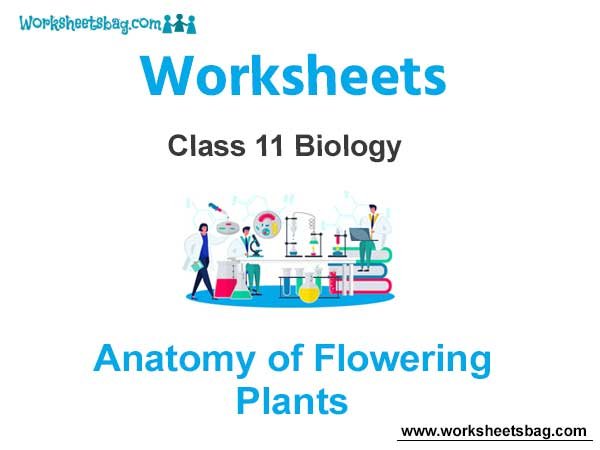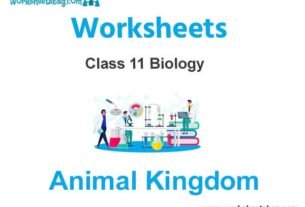Students should refer to Worksheets Class 11 Biology Anatomy of Flowering Plants Chapter 6 provided below with important questions and answers. These important questions with solutions for Chapter 6 Anatomy of Flowering Plants have been prepared by expert teachers for Class 11 Biology based on the expected pattern of questions in the Class 11 exams. We have provided Worksheets for Class 11 Biology for all chapters on our website. You should carefully learn all the important examinations questions provided below as they will help you to get better marks in your class tests and exams.
Anatomy of Flowering Plants Class 11 Biology Worksheet
Question. Select out the incorrect statement regarding to xylem
(a) On the basis of origin xylem is differentiated into primary xylem and secondary xylem.
(b) On the basis of development, secondary xylem is differentiated into protoxylem & metaxylem
(c) In stems, protoxylem lies towards centre and metaxylem towards periphery
(d) In roots, metaxylem lies towards centre & protoxylem towards periphery
Answer
B
Question. In dicot stem, the cells of cambium present between primary xylem and primary phloem is the
(a) Interfascicular cambium
(b) Vascular cambium
(c) Intra fascicular cambium
(d) Cork cambium
Answer
C
Question. Permanent tissue, having all cells similar in structure and function is called
(a) Simple tissue
(b) Complex tissue
(c) Cambium
(d) Apical meristem
Answer
A
Question. Obliterated central lumen (cavity) is the characteristic feature of
(a) Tracheids
(b) Vessels
(c) Xylem fibres
(d) Xylem parenchyma
Answer
C
Question. Bark that is formed early in the season is called
(a) Late bark
(b) Soft bark
(c) Hard bark
(d) Ring bark
Answer
B
Question. Due to continuous growth of secondary xylem which of the following get crushed gradually
(a) Primary phloem
(b) Earlier formed secondary phloem
(c) Either a or b
(d) Both a and b
Answer
B
Question. By the activity of cambium ring, the cells cut off toward pith, mature into
(a) Secondary phloem
(b) Primary xylem
(c) Secondary xylem
(d) Primary phloem
Answer
C
Question. Impervious nature of cork for water is due to deposition of which chemical ?
(a) Lignin
(b) Suberin
(c) Pectin
(d) Hemicellulose
Answer
B
Question. The cells of secondary cortex are :-
(a) Sclerenchymatous
(b) Parenchymatous
(c) Collenchymatous
(d) Meristematic
Answer
B
Question. The innermost layer of cortex of dicot root is characterised by presence of suberin thickening. This suberin thickening occurs on
(a) Radial walls
(b) Transverse wall
(c) Tangential wall
(d) Both a & c
Answer
D
Question. Example of lateral meristem/s is/are :-
(A) Intrafascicular cambium (Fascicular vascular cambium)
(B) Interfascicular cambium
(C) Cork cambium
(a) Only A
(b) Only B
(c) Only C
(d) All A, B and C
Answer
D
Question. Cells of parenchyma are generally isodiametric but different in shape. Which of the following is not a shape of parenchyma :-
(a) Spherical
(b) Fibrous
(c) Oval
(d) Elongated
Answer
B
Question. Tissue that produce woody axis and appear later than primary meristem is called
(a) Apical meristem
(b) Intercalary meristem
(c) Secondary meristem
(d) Both a and b
Answer
C



